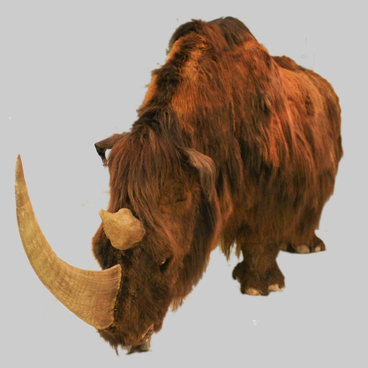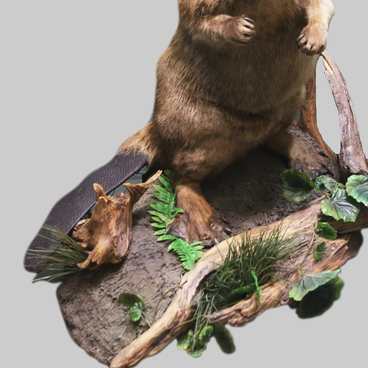In 1938, a team of archaeologists led by Sergei BIbikov discovered the Buranovskaya cave, which is located near Ust-Katav on the Yuryuzan River. It contained a burial site with the remains of a man aged somewhere between 30 and 60. It was not possible to determine the age more accurately. The skeleton lay on its back, its arms at its side and its head tilted at 120 degrees. The buried man was 150 centimeters tall.
The grave goods consisted of 35 medallion-shaped pendants of various sizes, made of bluish-green or green serpentine. The pendants had holes drilled along their edges. One side of the pendants was highly polished: people who lived at that time had already known how to saw, drill, and grind stones. The pendants were placed around the hips and down at the feet. Perhaps they had once been sewn onto a belt. The burial site dates back to the 5th millennium BC.
Similar burial sites had previously been found in caves along the Chusovaya, Yuryuzan, and Sim rivers, on an island in the Argazi Reservoir, and on a lakeshore near the village of Shatrovo. The decorations from the clothes of the deceased, in particular, the flat teardrop-shaped pendants made of soft rocks, are similar to those found on shaman robes that date back to more recent times.
On the right wall near the entrance to the cave, some 25 centimeters off the floor and not far from the buried man, the archaeologists discovered drawings made with dark red ocher (the same paint was found in a hole under the head of the deceased): the upper part of the drawing depicted the tip of a harpoon, while the lower part showed the skeleton of an animal, presumably a moose or a horse. The drawings from the Buranovskaya cave are unique. They have no similarities with the Karelian petroglyphs or the pictograms found in Siberia, Kazakhstan, and Mongolia. There are also no similar drawings among the most geographically close pictograms of the Middle and Northern Urals. All known pictograms and petroglyphs feature a relatively complex composition and a different, more realistic manner of drawing, despite their primitiveness.
The scarcity of discovered and studied Stone Age burial sites can be attributed to the fact that the funeral rites used at the time were different, and their traces may not have survived to this day. One of those rites presumably involved a water burial.
The grave goods consisted of 35 medallion-shaped pendants of various sizes, made of bluish-green or green serpentine. The pendants had holes drilled along their edges. One side of the pendants was highly polished: people who lived at that time had already known how to saw, drill, and grind stones. The pendants were placed around the hips and down at the feet. Perhaps they had once been sewn onto a belt. The burial site dates back to the 5th millennium BC.
Similar burial sites had previously been found in caves along the Chusovaya, Yuryuzan, and Sim rivers, on an island in the Argazi Reservoir, and on a lakeshore near the village of Shatrovo. The decorations from the clothes of the deceased, in particular, the flat teardrop-shaped pendants made of soft rocks, are similar to those found on shaman robes that date back to more recent times.
On the right wall near the entrance to the cave, some 25 centimeters off the floor and not far from the buried man, the archaeologists discovered drawings made with dark red ocher (the same paint was found in a hole under the head of the deceased): the upper part of the drawing depicted the tip of a harpoon, while the lower part showed the skeleton of an animal, presumably a moose or a horse. The drawings from the Buranovskaya cave are unique. They have no similarities with the Karelian petroglyphs or the pictograms found in Siberia, Kazakhstan, and Mongolia. There are also no similar drawings among the most geographically close pictograms of the Middle and Northern Urals. All known pictograms and petroglyphs feature a relatively complex composition and a different, more realistic manner of drawing, despite their primitiveness.
The scarcity of discovered and studied Stone Age burial sites can be attributed to the fact that the funeral rites used at the time were different, and their traces may not have survived to this day. One of those rites presumably involved a water burial.



